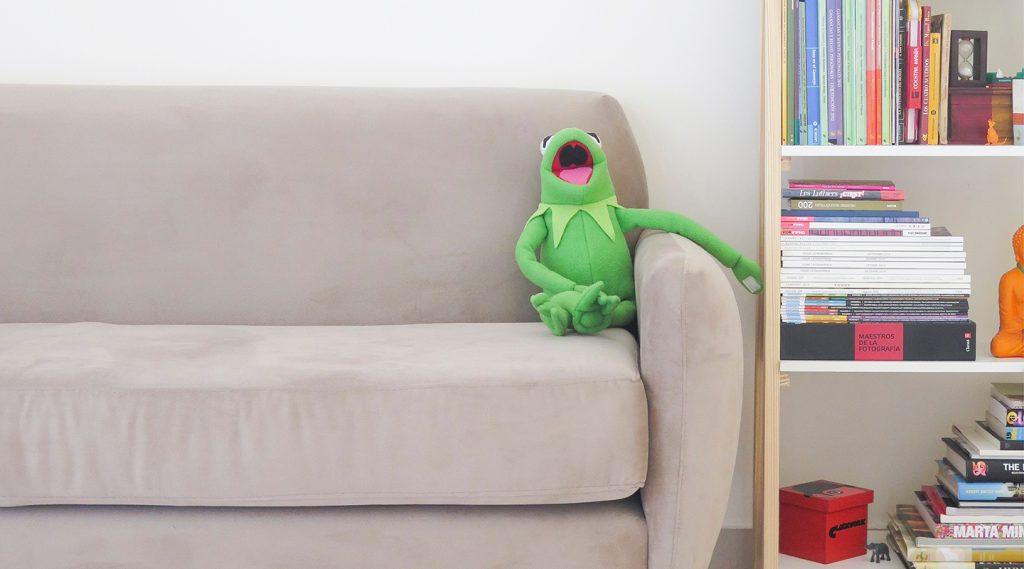So it’s 11pm, and you’re dreading going to bed, it’s going to be another long night. It might take you 4 hours to fall asleep or you may fall asleep and wake up several times during the night. First, stop thinking about it so much! Overthinking before bed only increases your anxieties and makes it even harder to achieve that peaceful night of sleep. Instead, why not use this time to try a few mindful meditation techniques?
Mindfulness meditation works by helping you understand your own thought process and how it works. Studies have shown that sleeping habits improve dramatically when participants where taught to respond to sleep disturbance with mindfulness skills- rather than reacting automatically by increasing effort to rest. After meditating regularly, the average time it took participants to fall asleep dropped from an hour and a half to only 15 minutes. Studies found on the US National Library of Medicine’s website show that after meditating regularly, serotonin levels increase, which lowers anxiety and stress. This is important since 90% of anxiety sufferers also deal with insomnia and other sleep problems. Another reason many Americans lose sleep is from chronic pain. By lowering blood pressure, meditation actually reduces throbbing and swelling from arthritis and other injuries. It also helps to teach your brain “mind over matter” type of thinking, which takes your mind off the pain, and increases the body’s overall pain threshold.
After practicing for a couple of nights, you will start to notice how fast the thoughts flow, which ones occur more often and what triggers them. From this point you can slow down the thoughts or possibly quiet your mind all together. Keep in mind that there will come times, especially when first starting, that you may have difficulties controlling your thoughts. Don’t let yourself become frustrated; contrary to most belief mindfulness meditation is not based on how well you can control your thoughts, but by how soon you realize that you’re off track. Once you realize your mind is wandering again, all you have to do is gently pull your thoughts back on track.
In some cases when your mind is extra busy and it’s really hard to concentrate, it’s best to just let the thoughts flow. A therapist once described this as “trying to reverse the flow in a powerful river” in the sense that you should simply observe without disruption until the “river” of thoughts slows down. The trick to this method is to observe the thoughts one at a time, giving them the attention they so desire and move on to the next thought. This technique shows you how to slow your mind down and help cut down on the inner chatter so you can see the situation more clearly, while avoiding frustration. Once you feel more relaxed, you can move on to any other form of meditation that works best for you.
Probably the most common (and easiest) technique for helping you get to sleep is called mindful breathing. To do this, you bring attention to the natural flow of your breath. By turning your attention to your breathing, it helps to channel your mind into thinking about the breath rather than the thoughts popping up. You can use this method while listening to music or combine it with visual imagery. Visual imagery is used to transport you to a more relaxing atmosphere-which that can reduce stress levels by itself. Maybe you have a serene picture that makes you feel calm, or maybe you are the type who likes to imagine you are somewhere else. One example of this is that some people imagine that they’re blowing bubbles; they put the stick in the jar and watch every bubble go over a field until the jar is empty. You can imagine anything you want as long as it calms you. As you focus on this scene, use any breathing technique you like.
A more advanced version of mindful breathing is “body scan” meditation. It starts out like mindful breathing, then you gradually direct your attention to every part of your body starting with the top of your head working your way down to your toes. Many often describe it as a “tingly feeling” in each part you focus on and that you will begin to feel heavy like you are sinking into the bed. Continue on with this until you have fallen asleep.
These are just a few examples of how you can use mindful techniques. As you research on, you may find other styles, or a combination of styles, that work best for you. However, beware that there are some meditation approaches that are meant to keep you alert and focused. Experts advise against using these methods for more than 15 minutes at bedtime. Although they can help you to relax, it may end up putting you in a more alert and awake mindset. These methods include yoga, zen, tai chi and any others that include moving or being in a sitting position. It’s best to do these earlier in the day and you never know, perhaps combining these methods earlier in the day with mindful techniques at night could help you sleep better when bedtime rolls around.
Download Relax Melodies
References:
http://Psychologytoday.com
http://www.cdc.gov/features/dsSleep/
http://www.ncbi.nlm.nih.gov/
http://www.abc-of-meditation.com/health/insomnia-meditating-exercises.asp
http://www.meditationoasis.com/how-to-meditate/
http://www.project-meditation.org/a_bom1/meditation_for_pain_relief.html
http://psychcentral.com/lib/can-relaxation-techniques-help-chronic-pain/0001088
http://nutritionwonderland.com



